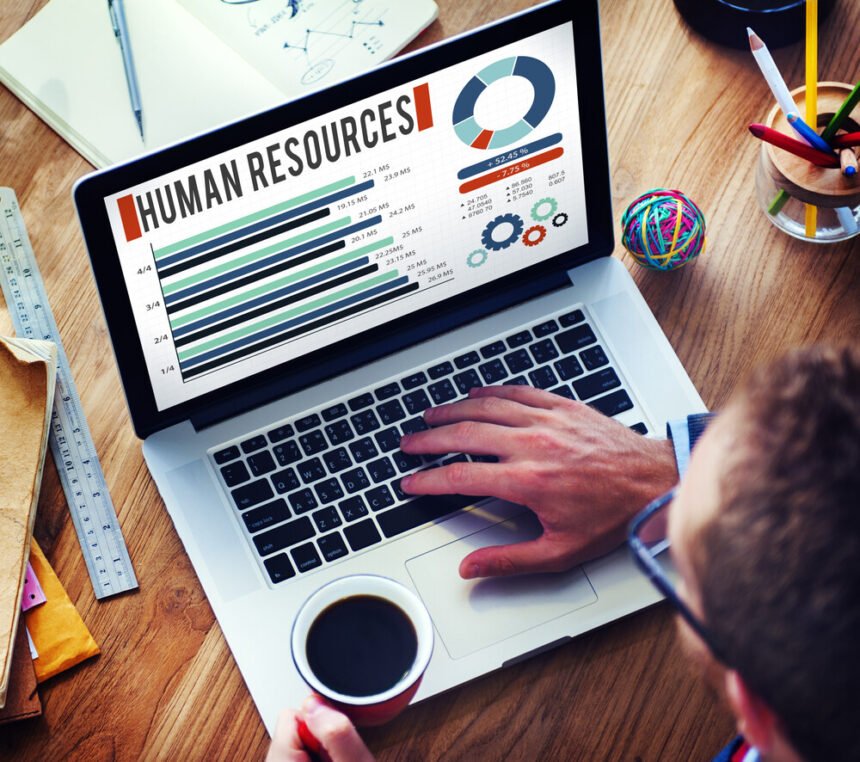The Big Data revolution is underway: as the size, scope, and speed of data flowing into businesses grows, so does our ability to store and analyse it. Recent research revealed, that around 48.4% of Fortune 1000 companies are now achieving ‘measurable results’ from Big Data ventures, while 80.7% of their executives described those investments as ‘successful’. With so many opportunities on the table, the potential advantages of Big Data for HR and payroll – both highly-data focussed fields – would seem self-evident.
Big Data Challenges
Although Big Data promises dramatic new opportunities and insight for HR and payroll departments, it also poses problems: the sheer scale of the information which must be stored, navigated, and interpreted by businesses is daunting. In fact, estimates put the amount of data created globally, per day, at 2.5 exabytes – that’s 2.5 billion gigabytes.
Fortunately, businesses are starting to understand how to adjust to, and control, the data influx. Advances in cloud computing have created an environment in which the data landscape is open accessible and affordable – allowing us to store accumulated information before interpreting it in useful ways. From statistical and database software, to image-recognition and language detection, modern businesses now possess the tools to mine the raw information they collect – but the real challenge, understanding how to use that data, remains.
Why is Big Data so helpful for payroll & HR?
Payroll and HR processes both involve the analysis of vast, complex data sets pertaining to employee and client demographics, wages, taxes, social security, work hours, and an array of additional administrative factors. Regardless of a business’ size, the data generated and used by payroll and HR departments can be unwieldy and incoherent when viewed from ‘ground level’, but when fed into the analytic machinery of a Big Data platform, that same data can be used to generate valuable insight into previously opaque, and discrete, processes and systems.
With that in mind, let’s take a look at some of the ways Big Data is particularly useful to payroll and HR departments…
Storage efficiency: At a very basic level, Big Data platforms offer a way for HR and payroll departments to manage the practical data they need to deliver their services. From information on individual employees to tax compliance regulations, HR and payroll teams must handle a huge spectrum of specialised data – being able to store and access that data efficiently means enhancing their performance.
Hiring strategies: Big Data analytics tools are particularly useful for creating an optimised workforce. Factors like sales data, employee feedback, and customer surveys, can all be translated into new hiring strategies or screening processes which identify the candidates most likely to succeed in an HR or payroll environment, and put them in the right role.
Employee development: From an HR perspective, being able to examine the small detail of the employee experience is an obvious advantage – for both retaining talent, and getting the most out of individuals during their time at a business. Big Data analytics can be used to monitor the professional progress of employees on an ongoing basis, and help employers plan more beneficial training and career development.
Global oversight: HR and payroll organisations which provide global solutions for international clients face a complex and uneven data landscape – which can be inefficient and costly to deal with. Big Data offers a way to harmonise data collected from an unwieldy spectrum of international locations, and reduce the friction created by compliance issues across legislative territories. With an unprecedented level of control over global payroll and HR processes, payroll and HR departments could compare the performance of different international workforces, identify efficiency solutions, and implement more cohesive global strategies.
Productivity measurement: Crucial to business success. Big Data analytics can identify areas in which the performance and productivity of departments, or individuals, could be improved – on a yearly, monthly, or even hourly basis. The ability to identify performance issues with increased precision is obviously useful to HR departments – who must manage employees and address personnel issues – but is also extremely advantageous to payroll departments seeking to fine-tune the phases of their monthly or weekly pay-cycle.
Business decisions: The potential of Big Data to improve payroll and HR goes beyond the tweaking of hiring strategies or the micro-management of employees – and extends to driving the future of a business. Big Data analytics often provide revelations which challenge conventional wisdom regarding entrenched payroll and HR processes, and inform important business decisions. In a more practical sense, Big Data delivers new ways to innovate, mitigate risk, and even anticipate the effects of legislative changes. Tools like a paystub generator can aid in this innovation by ensuring accurate and efficient payroll processing.
Changing expectations
Using Big Data successfully means changing expectations about what is possible with the information it delivers. Their reliance on data, and their professional proximity to each other, make HR and payroll departments ideal beneficiaries of the analytic power of Big Data – but the integration and implementation process demands care and consideration. While it may well herald a new era of innovation and opportunity, Big Data is ultimately just a business tool – albeit a particularly useful one – and, like any tool, it must be used in the right way to be effective.







